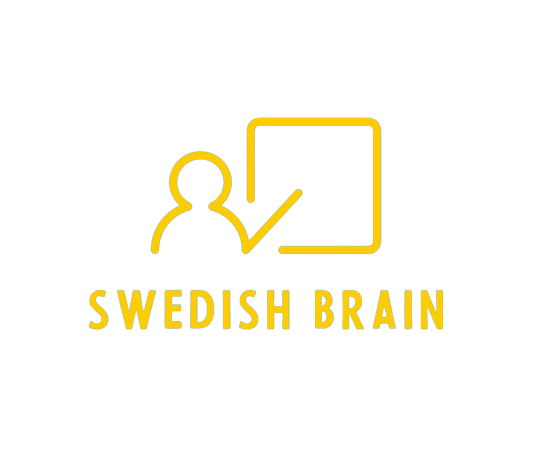
Learning Swedish, like any language journey, is a step-by-step process that takes learners from the very basic beginner levels of A1 to the advanced fluency of C1. However, the path to mastering Swedish is punctuated with both strategic moves and potential pitfalls. When diving into Swedish, a language renowned for its melodious tone and unique pronunciation, knowing these dos and don’ts can ensure you’re headed in the right direction.
Dos When Learning Swedish:

- Invest in Quality Early Education: Imagine building a house; you’d want a strong base, right? Learning is the same. Many learners mistakenly believe that it’s unnecessary to invest in high-quality courses for beginner levels like A1 or A2. This is a fundamental misstep. Starting with a strong foundation is the key. The majority of students who start their learning journey in courses where the teacher predominantly speaks the student’s native language, with unequal emphasis on speaking, writing, listening, and reading, often face challenges later on. They find themselves disappointed and weak when compared to students who have invested the same amount of time but began with a comprehensive, professional course.
The essence is clear: Start strong with a professional foundation, and you can then confidently continue your journey independently.
- Practice Regularly: Consistency in practice is vital. Dedicating even just a short span of time daily, perhaps during a coffee break, can lead to significant progress over time. Engaging in conversations, whether it’s with native speakers found on platforms like iTalki, or simply practicing with fellow learners in conversation clubs (språkcaféer) sharpens your speaking and comprehension skills.
Remember, language is not just about words; it’s about communication.

- Dive into Swedish Culture: Surrounding yourself with the cultural aspects will immerse you in the language. Understanding the cultural context can give depth to your language learning. In Sweden, for instance, punctuality is highly valued. Delve into Swedish literature, watch films or listen to music in the language.

- Use Technology: Modern technology offers an array of tools to facilitate Swedish learning. Mobile apps and online courses can provide structured lessons, daily challenges, and interactive exercises. Furthermore, joining online Swedish communities or forums such as https://kompissverige.se/ can introduce you to resources, discussions, and feedback that traditional learning might miss out on. Beyond language apps, consider Swedish news apps or even simple games in Swedish to boost your comprehension.
- Learn the Pronunciation: Swedish has sounds that might be unfamiliar to speakers of many other languages. Spend extra time on mastering these unique sounds to enhance your comprehension and speaking skills. The “sj-” and “tj-“ sound, common in words like “sjuk” or “tjugo” can be particularly tricky, but with consistent practice and feedback, you can master it.
- Get Feedback: Learning in isolation can lead to unnoticed mistakes. Engaging with a tutor is fundamental when learning a new language; they’re trained to spot and correct mistakes that often slip by self-learners. Feedback from someone experienced ensures that small errors don’t become hard-to-break habits.
Besides professional guidance, it’s also valuable to chat with native Swedish speakers. They bring a real-world context to your learning, helping you understand everyday use. Moreover, by joining group classes, you get the added advantage of diverse feedback and suggestions from other learners.
Don’ts in Learning Swedish:
- Don’t Rely Solely on Word-by-Word Translation: Languages often have idiomatic expressions. While translations can sometimes be helpful, relying solely on them can be misleading. Directly translating phrases word-by-word can sometimes lead to confusion. For instance, the Swedish saying “Det är ingen ko på isen”, which translates literally to “There’s no cow on the ice”, essentially means “Don’t worry”. Hence, understanding the essence rather than just the words is key.
- Don’t be afraid of making mistakes: We learn from our errors! If you’re attending a conversation club or a group course with a tutor, understand that the tutor can’t assist you unless you start speaking and making mistakes. Rest assured, your teacher won’t mock your errors or get frustrated. It’s their job to help you correct them. Moreover, in a group lesson, everyone is at a similar level, so no one is superior.
- Don’t get discouraged: Ups and downs are part of the journey. You should keep in mind that everyone makes mistakes and learning a new language is not simple. If you feel stuck, look back and see how much you’ve already learned. Celebrate small wins such as understanding a Swedish song, having a fluent conversation, or writing a long text without using a dictionary.
- Don’t Skip Early Lessons: While it might be tempting to jump straight into advanced content or conversational Swedish, a solid foundation in the basics is crucial. Ensure you’re comfortable with fundamental grammar and vocabulary before progressing.
- Don’t Limit Yourself to One Resource: Every learning material has its strengths and weaknesses. If one book doesn’t explain a concept well, look for alternate sources or YouTube explanations. Integrating Swedish movies, music, or podcasts can introduce you to real-world usage, colloquialisms, and the contemporary language flow.
- Don’t Underestimate the Importance of Listening: While reading and writing are crucial, listening to the language as it’s naturally spoken can drastically improve your comprehension. Listen to Swedish radio, podcasts, or shows to get a feel for the natural rhythm and intonation: Different sources cater to different learning styles.
Conclusion:
Swedish, with its rich history and unique sound, offers learners a captivating experience. By following these dos and don’ts, you can make your journey of mastering the Swedish language more efficient and enjoyable. Remember that every language learner’s journey is unique, so tailor these suggestions to what works best for you. By embracing the culture, integrating modern tools, and being open to feedback, your linguistic prowess will flourish. Enjoy each phase, from the initial struggles to the joy of fluent conversations. Happy learning!

















